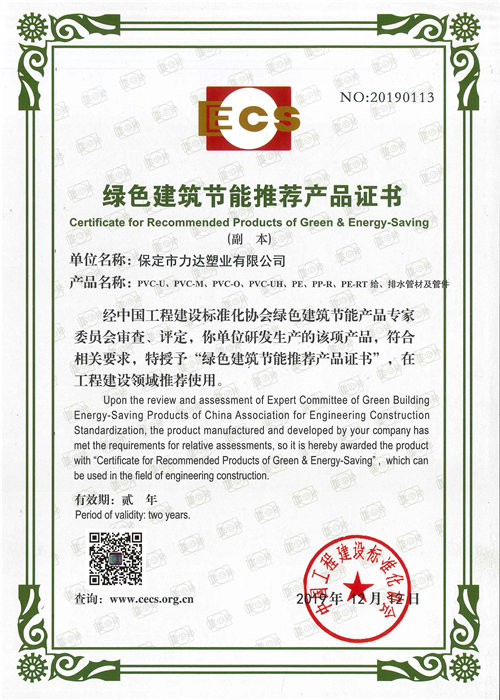Oct . 02, 2024 09:59 Back to list
hdpe pipe coupling
HDPE Pipe Coupling An Overview
High-Density Polyethylene (HDPE) pipes have gained immense popularity in various industries due to their durability, flexibility, and resistance to corrosion. As these pipes are employed in water supply systems, agricultural applications, and even in oil and gas transportation, the coupling of HDPE pipes is a crucial element that ensures efficient connectivity and reliable performance. This article will explore the significance, types, and installation methods of HDPE pipe couplings.
Importance of HDPE Pipe Couplings
Couplings in pipe systems serve the essential purpose of joining two pipe segments, allowing for the smooth flow of liquids or gases. In HDPE piping systems, couplings are particularly significant due to the unique properties of HDPE. This material is known for its ability to withstand extreme environmental conditions and pressures, making it ideal for intensive applications. A robust coupling guarantees that the joints can handle stress and maintain a secure seal, preventing leaks that could lead to operational failures or environmental issues.
Types of HDPE Pipe Couplings
1. Mechanical Couplings These are commonly used due to their ease of installation and the ability to dismantle them without damaging the pipes. Mechanical couplings typically use a series of bolts and clamps to hold the pipe ends together.
2. Electrofusion Couplings This type of coupling involves the use of electric current to heat and fuse two pieces of HDPE pipe together. Electrofusion technology ensures a strong bond and is highly effective for underground applications.
3. Butt Fusion Couplings Butt fusion is another widely used method where the ends of two HDPE pipes are heated and then pressed together to form a permanent joint. This process creates a seamless connection, offering high strength and excellent resistance to leakages.
4. Flanged Couplings Flanged couplings involve attaching flat flanges to each end of the pipes and using bolts to secure them together. This method allows for easy disassembly, making it a practical choice for applications that require regular maintenance.
hdpe pipe coupling

Installation Process
The installation of HDPE couplings varies depending on the type, but generally follows a systematic approach
1. Preparation Clean the ends of the HDPE pipes to remove any dirt, dust, or contaminants.
2. Alignment Ensure that the pipes are properly aligned before fitting the coupling.
3. Joining For mechanical couplings, tighten the bolts uniformly; for electrofusion, connect the fusion machine and follow the manufacturer's instructions; and for butt fusion, standard heating techniques must be applied.
4. Testing After installation, conduct pressure testing to ensure that there are no leaks and that the joints can handle the required operational pressure.
Conclusion
In summary, HDPE pipe couplings play a pivotal role in the integrity and functionality of HDPE piping systems. With various types available to suit different applications, it is essential to select the appropriate coupling based on the specific needs of the project. Proper installation and regular maintenance of these couplings will ensure a long life span for the piping system, contributing positively to operational efficiency and sustainability. As industries continue to evolve, the demand for HDPE piping solutions, alongside reliable couplings, is expected to rise, emphasizing the need for technological advancements in this area.
-
Durable PP Rigid Sheet: Lightweight, Chemical Resistant Solutions
NewsAug.21,2025
-
PVC Grey Sheet for Extraction: Chemical Resistant & Durable
NewsAug.19,2025
-
Durable PVC Pipe Fittings for Plumbing & Irrigation Needs
NewsAug.18,2025
-
HDPE Steel Belt Reinforced Spiral Corrugated Pipe | High Strength
NewsAug.17,2025
-
HDPE Pipe Fittings: Durable, Leak-Proof Solutions
NewsAug.16,2025
-
Premium CPVC Sheet: High-Temp & Chemical Resistant Solutions
NewsAug.15,2025

